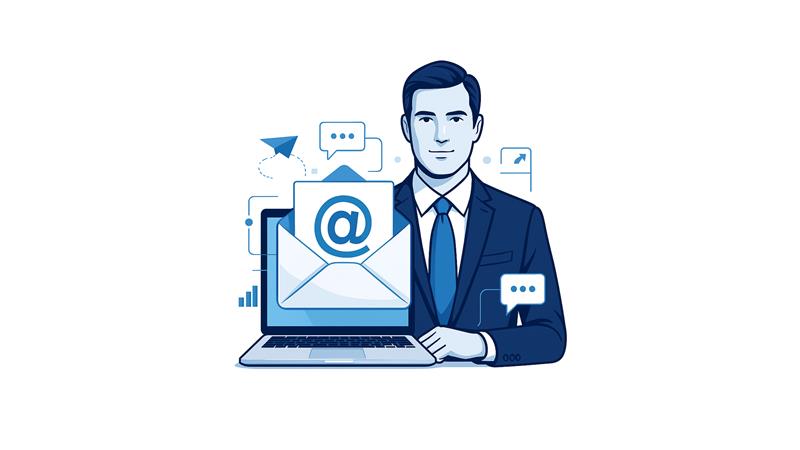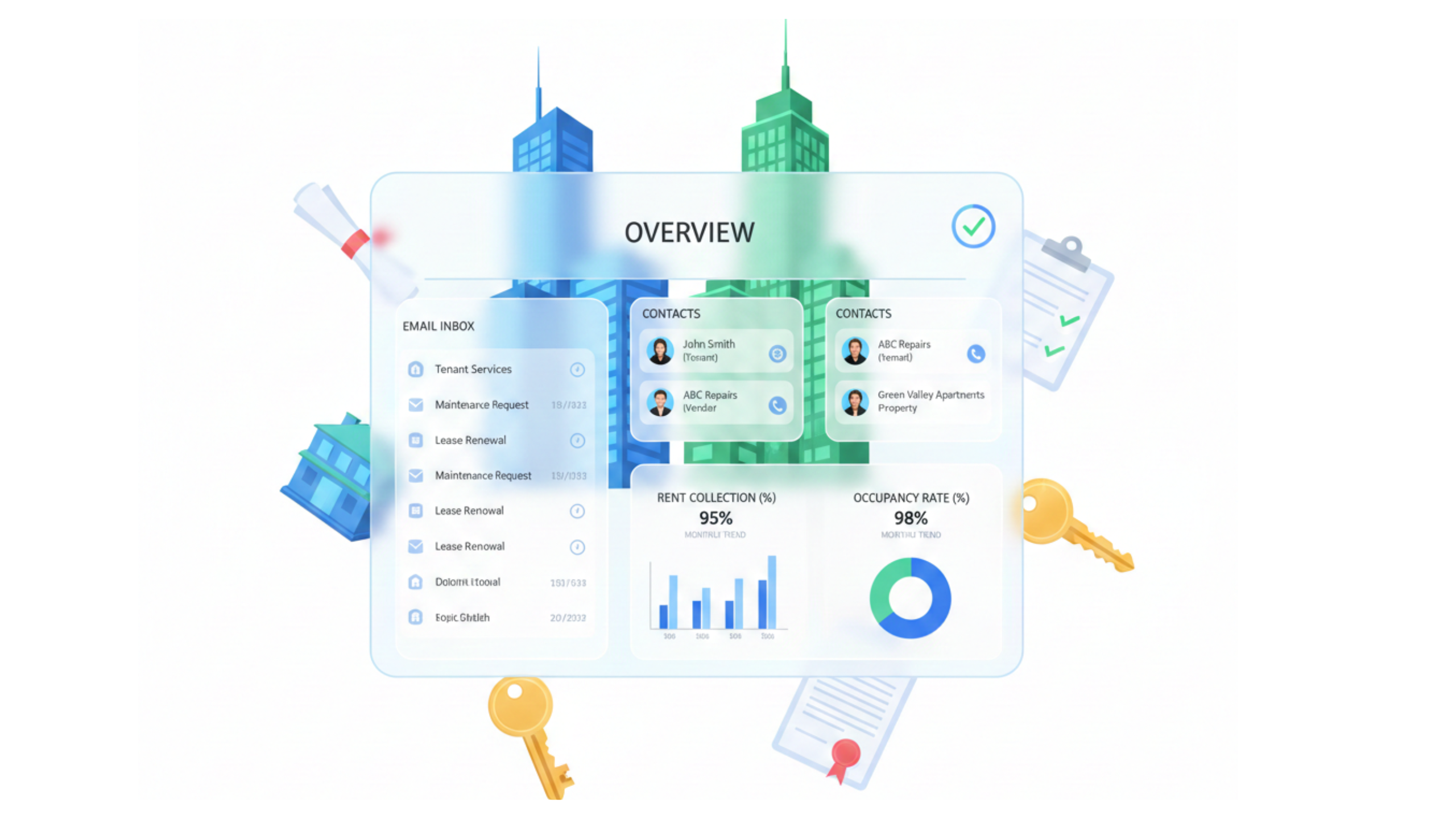How to Cold Email C-Level Executives (Tips & Templates)

- Adam Rey
Let’s be honest! Cold emailing C-level executives isn’t for the faint-hearted. These are people whose inboxes are war zones of pitches, proposals, and “quick chat?” requests. One wrong subject line, and your email is buried before it’s even opened.
But here’s the good news: getting a reply from a CEO, CFO, or CTO isn’t luck; it’s strategy. With the right mix of personalization, timing, and value, your email can rise above the noise and earn that coveted click (and conversation).
In this blog, you’ll learn how to craft cold emails that actually get responses from top executives. A complete guide with proven techniques, real-world tips, and customizable templates that turn your outreach into results.
Why It’s So Hard to Reach C-Level Executives
C-suite leaders receive hundreds of emails daily—from sales pitches to partnership requests. What makes it difficult is not just getting into their inbox, but earning a few seconds of attention.
Common reasons why cold emails fail:
- Generic subject lines that scream “sales pitch.”
- Overly long messages without clear value.
- Lack of personalization or relevance.
- Poor timing and follow-up strategy.
Winning a C-level executive’s attention requires one thing above all—relevance. They’ll only respond if your message clearly connects to their goals, challenges, or metrics.
To overcome this, check our executive blog on Top 5 Most Reliable Sources for C-Level Executive Contact Information in 2025 to track-down the reliable and authentic sources to rely in 2025 and master your campaign game.
Are you Looking for a Reliable C-Level Executives Email List ?
Request a Quote!Step-by-Step Guide to Writing a Cold Email for C-Level Executives
1. Research Before You Write
Start by understanding:
- Their company’s priorities or pain points.
- Recent achievements, news, or funding updates.
- The executive’s role, KPIs, and strategic focus areas.
Example: If a CTO recently mentioned scaling infrastructure in a press interview, your pitch could open with a reference to that challenge.
2. Craft a Clear, Value-Focused Subject Line
Your subject header determines whether your email gets opened. Keep it short (under eight words) and outcome-driven.
Examples:
“Cut Your Cloud Costs by 30% in 60 Days”
“Quick Idea to Improve Lead Quality for [Company Name]”
“Question about [Specific Business Goal]”
3. Open with Relevance, Not Your Introduction
Avoid starting with “Hope you’re well” or “My name is…”.
Instead, lead with why you’re reaching out and why it matters to them.
Example:
Saw that [Company Name] is expanding into [Market]. I’ve helped similar firms streamline operations during scale-up phases—thought you might find this useful.
4. Focus on One Core Benefit
Executives don’t need the full product demo in your first email. Instead, show what’s in it for them—time saved, revenue gained, risk reduced.
✅ Keep it under 80 words.
✅ Avoid jargon.
✅ Make it actionable.
5. Use Social Proof and Specifics
C-levels trust data and examples.
“We recently helped [Competitor] cut onboarding time by 40% using a similar solution.”
This adds instant credibility and context.
6. End with a Simple CTA (Call to Action)
Your goal isn’t to close a deal—it’s to start a conversation.
End with one clear action:
- “Would you be open to a 10-minute chat next week?”
- “Can I share a quick 1-page case study?”
- Avoid weak CTAs like “Let me know what you think.”
7. Follow Up Smartly
Most C-level responses come after the second or third follow-up.
Wait 3–5 business days before following up.
Each follow-up should add new value, not just “checking in.”
Example Follow-up:
Just wanted to share a short case study on how [Client] improved efficiency by 28%. Thought it might align with your recent [initiative/goal].
Wait!
Are you still figuring out how to get C-Level Executives Mailing List for business growth? Don’t worry!
Check our blog on this topic and get your business growth plan ready.
Winning Cold Email Templates for C-Level Executives
Not sure how to start your outreach? Use these ready-to-send templates that have helped marketers, recruiters, and founders land meetings with top executives.
Template 1: Straight-to-Value Email
Subject: Quick idea to [achieve specific goal]
Hi [First Name],
Noticed [Company Name] is [specific activity/goal]. We recently helped [similar company] achieve [result] through [your solution].
Would you be open to a quick chat next week to explore if this could work for your team?
Best,
[Your Name]
[Company | Website | LinkedIn]
Template 2: Social Proof + Relevance
Subject: [Competitor/Peer Company] used this to [achieve X]
Hi [First Name],
I saw your recent [initiative/news post/interview] about [topic].
[Competitor/Similar company] faced a similar challenge, and we helped them [specific measurable outcome].
Would you be open to a short conversation to see if we can replicate that success for [Company Name]?
Best,
[Your Name]
Template 3: Executive Insight Approach
Subject: Thought you’d appreciate this insight on [topic]
Hi [First Name],
I came across a recent report on [industry trend], and it reminded me of [Company Name]’s push toward [goal].
We’ve been working with [clients in a similar space] to [result].
Would you be open to a brief call to share insights that might help your [specific department or initiative]?
Regards,
[Your Name]
Pro Tip:
If you looking for a free email list of C-level executives? Check our blog today and plan your marketing strategies in no time.
Bonus: Quick Don’ts When Emailing Executives
❌ Don’t attach long PDFs or pitch decks in the first email.
❌ Don’t overuse buzzwords or AI-written fluff.
❌ Don’t mass-send with generic intros.
❌ Don’t chase—follow up with value.
Final Thought
Cold emailing C-level executives is an art that blends research, empathy, and precision. Remember—these leaders don’t buy products; they buy solutions to pressing business challenges. When you speak their language and demonstrate genuine value, your cold email becomes more than just another pitch—it becomes an opportunity.
If you want to connect with verified C-level contacts, eSalesClub can help you reach them across 120+ countries. Our C-Level Executives Email List gives you access to decision-makers with 95% accuracy and 85% deliverability. Build meaningful connections, close high-value deals, and drive results with data you can trust.
Ready to reach C-level Executives?
Get verified and accurate C-Level Executives Email List from eSalesClub today!
Get a Free Sample!FAQs on Cold Emailing C-Level Executives
Start with solid research, a personalized hook, and a short, value-driven message that addresses a specific business challenge. Keep it under 100 words and end with a clear call-to-action.
Include a compelling subject line, personalized opening, clear value proposition, social proof, and a single, specific CTA—avoid attachments or long descriptions.
Ideally 75–120 words. Executives appreciate brevity—get to the point quickly and focus on results, not features.
Keep them short and outcome-driven. Examples:
“Quick idea to cut costs by 25%”
“Improving [Company Name]’s lead quality”
“Thought you’d value this insight”
Follow up 2–3 times at reasonable intervals (3–5 days). Each follow-up should add new context, a case study, or a benefit—not just a reminder.
Studies show the best times are Tuesday to Thursday, between 8–10 AM in the recipient’s time zone. Avoid Mondays and weekends.
They fail due to lack of personalization, unclear value, poor timing, or generic mass messaging. Executives respond only when an email aligns with their goals or challenges.
Use insights from LinkedIn, press releases, or company reports. Mention a recent achievement, challenge, or business focus to show genuine relevance.
You can rely on trusted B2B data providers like eSalesClub, which offers a C-Level Executives Email List verified through a 7-tier AI + human process, ensuring 95% accuracy and compliance with GDPR and CAN-SPAM laws.
It helps you connect with top decision-makers across 120+ countries, segment contacts by job title, industry, or revenue, and launch highly targeted, compliant campaigns that drive measurable results.







